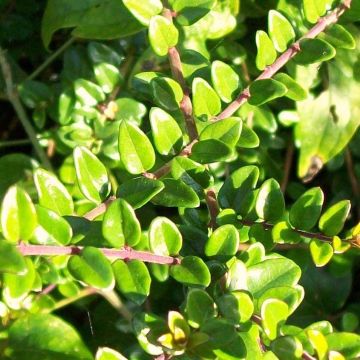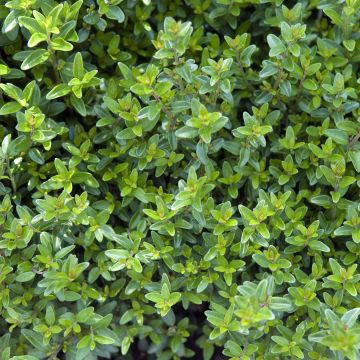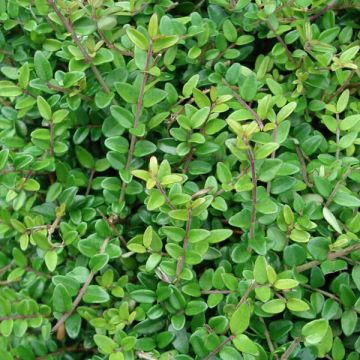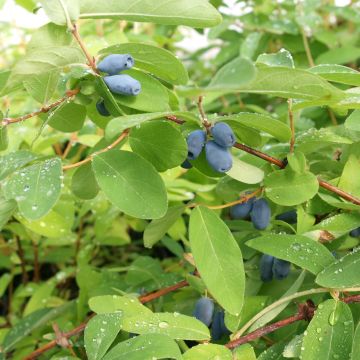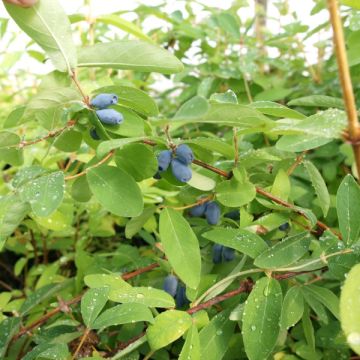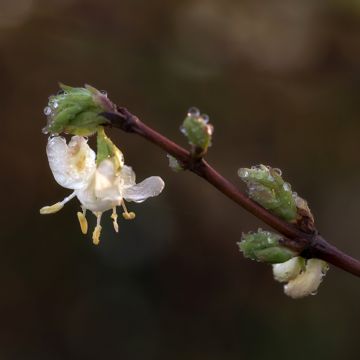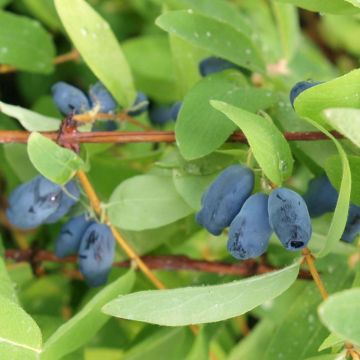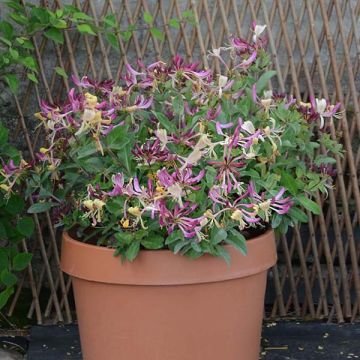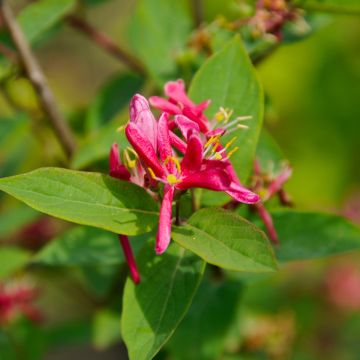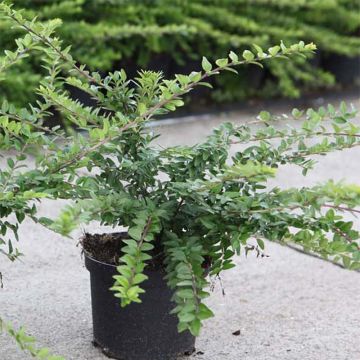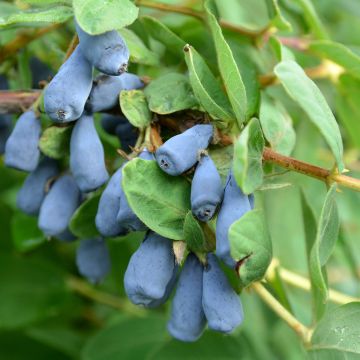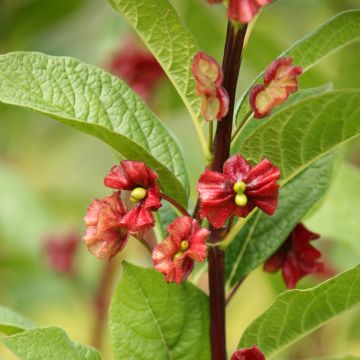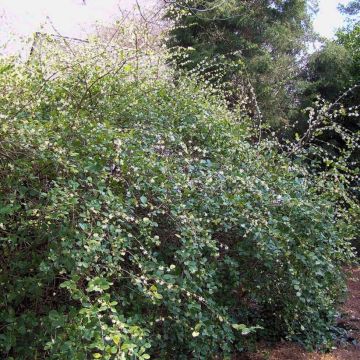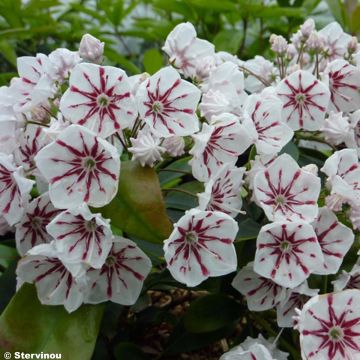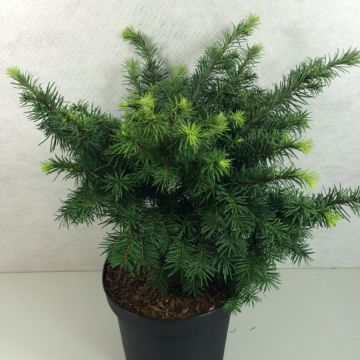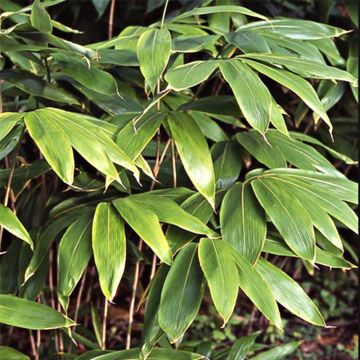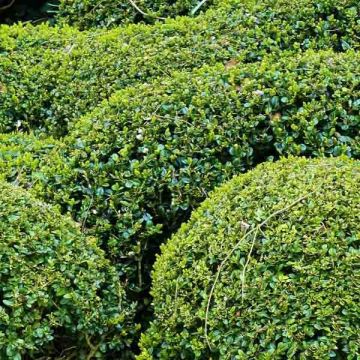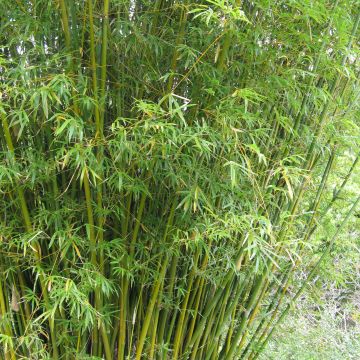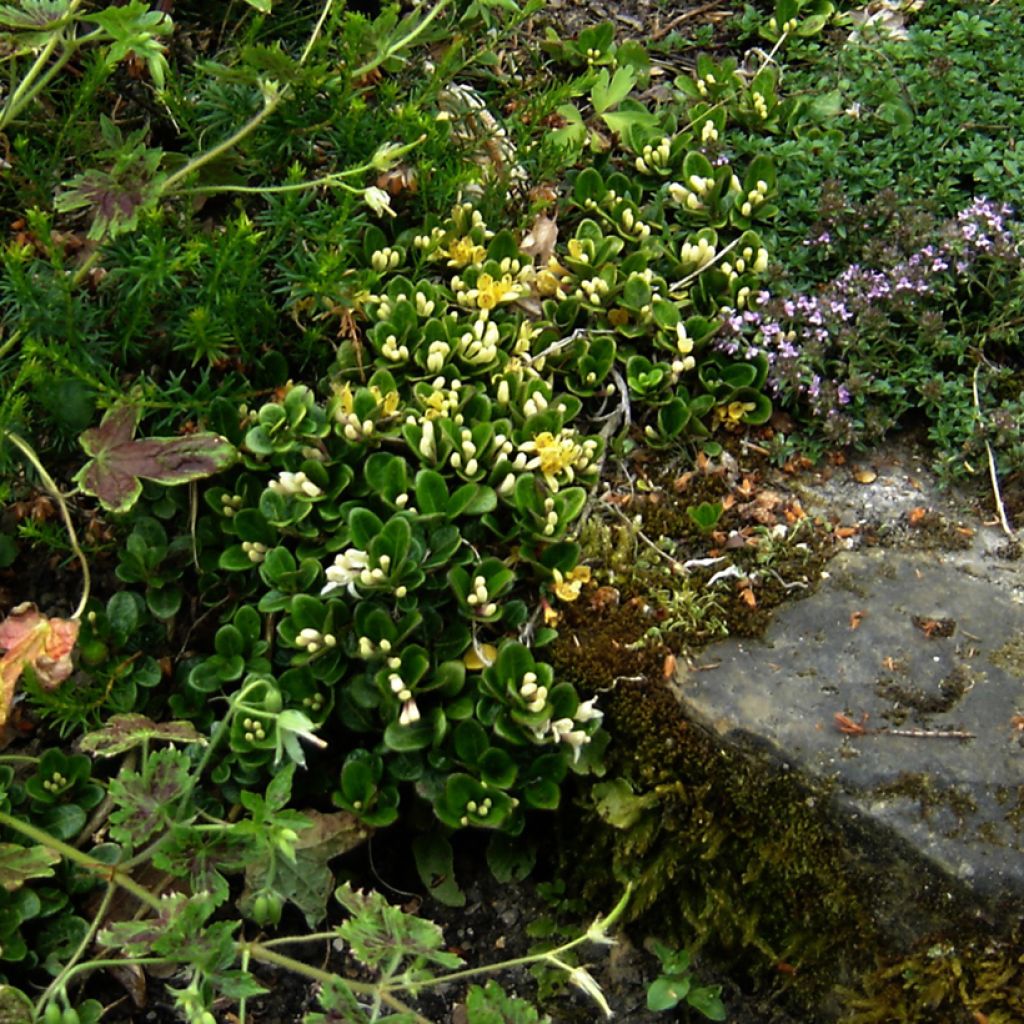

Lonicera crassifolia
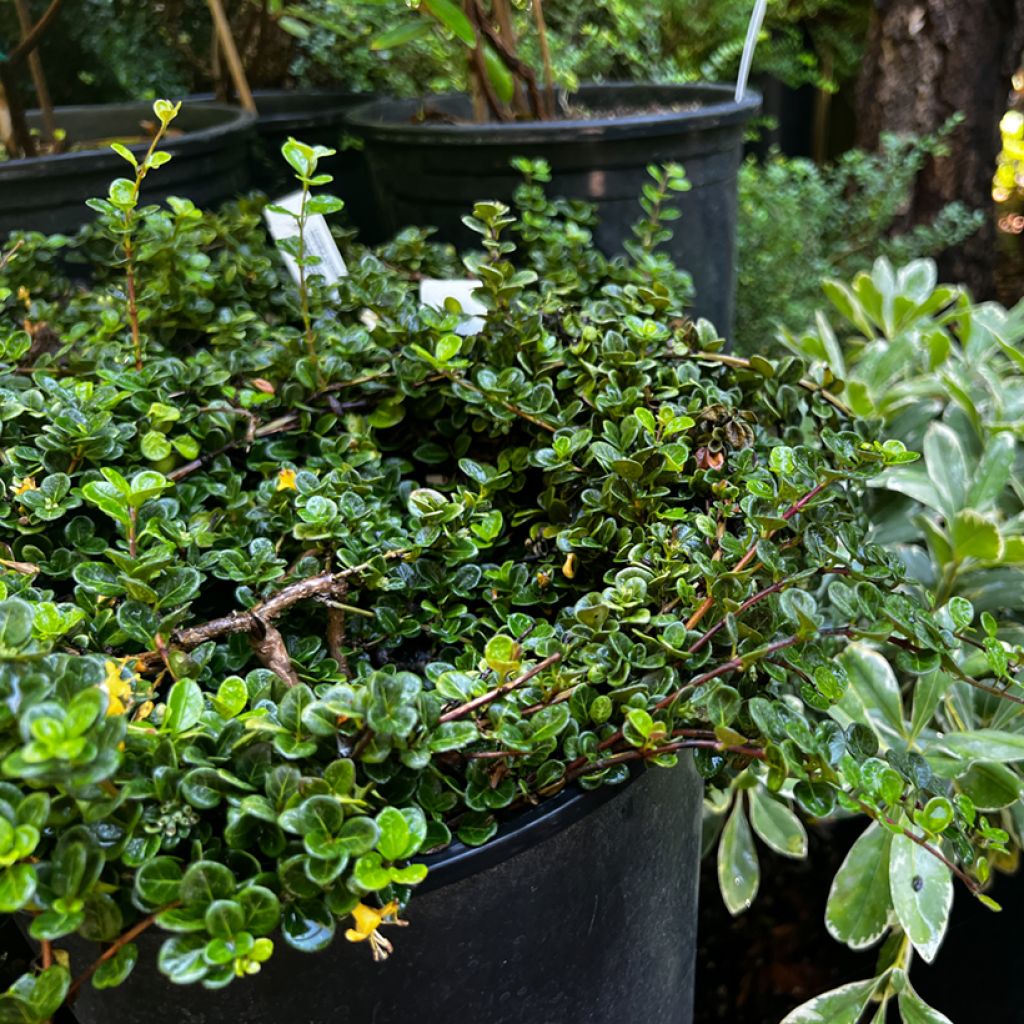

Lonicera crassifolia


Lonicera crassifolia
Lonicera crassifolia
Lonicera crassifolia
Karu honeysuckle
Special offer!
Receive a €20 voucher for any order over €90 (excluding delivery costs, credit notes, and plastic-free options)!
1- Add your favorite plants to your cart.
2- Once you have reached €90, confirm your order (you can even choose the delivery date!).
3- As soon as your order is shipped, you will receive an email containing your voucher code, valid for 3 months (90 days).
Your voucher is unique and can only be used once, for any order with a minimum value of €20, excluding delivery costs.
Can be combined with other current offers, non-divisible and non-refundable.
Why not try an alternative variety in stock?
View all →This plant carries a 24 months recovery warranty
More information
We guarantee the quality of our plants for a full growing cycle, and will replace at our expense any plant that fails to recover under normal climatic and planting conditions.
Would this plant suit my garden?
Set up your Plantfit profile →
Description
The Lonicera crassifolia is a low, very dense, evergreen bush honeysuckle, coloured bronze to red in winter, which forms an attractive ground cover in all seasons. It is also a valuable plant for greening areas of the garden or where the soil is mediocre and poor, often challenging to develop. Its generous cream-yellow flowering, washed with pink in summer, gives way to numerous blue-black berries that remain until winter. Very hardy, this accommodating little shrub will impact a rockery, as a border plant or even in a container on the terrace.
The Lonicera crassifolia belongs to the Caprifoliaceae family. It is the wild parent of the pretty variety 'Little Honey', better known to gardeners. This small, creeping, compact honeysuckle is very robust and native to the Himalayas. With a prostrate habit, composed of long branches running along the surface of the ground, it reaches about 10 cm in height, and will occupy 50 to 60 cm in width. Its growth is relatively slow, and its vegetation is well-branched. Its dense and bushy habit will be maintained or accentuated by regular pruning. Its small, tough, rounded evergreen leaves are glossy and green until summer. With the arrival of cold weather, they turn bronze, becoming red in colder temperatures. Flowering takes place from June to August, depending on the climate, for approximately one month. The small flowers are produced abundantly. They are tiny honeysuckle flowers, pale yellowish-white to cream, which take on a pink shade at the base over time. The small purple-red fruits, almost black, are toxic to humans but appreciated by birds.
The Lonicera crassifolia combines usefulness with beauty, especially in poor soils. It will elegantly cover the ground along the edge of a sunny flower bed in a rockery and dress up pretty pots for the terrace. It has only one requirement: well-drained soil, but not too dry in summer. It can be planted on a large slope as ground cover at a rate of 1 to 2 plants per square metre. For example, pair it with a dwarf conifer like the Juniperus horizontalis 'Blue Chip', a dwarf Holly Ilex meserveae 'Little Rascal', a variegated Lonicera nitida 'Lemon Beauty' ... and play with contrasts to brighten up an area of the garden. It is also an adorable little plant, slightly climbing, dense and finely textured, which adheres to cracks and crevices.
Report an error about the product description
Plant habit
Flowering
Foliage
Botanical data
Lonicera
crassifolia
Caprifoliaceae
Karu honeysuckle
Himalayas
Other Honeysuckle
View all →Planting and care
Plant the Lonicera crassifolia in very well-drained soil, even poor and chalky, not too dry in summer, partial shade or sun. It will also grow in shade, but it will flower less, and the beautiful winter colours of its foliage will be less intense. Prune regularly during growth to maintain a fairly dense habit and later on to accentuate a shape, whether it be in a border, in a pot, or to remove dead parts.
Planting period
Intended location
Care
This item has not been reviewed yet - be the first to leave a review about it.
Similar products
Haven't found what you were looking for?
Hardiness is the lowest winter temperature a plant can endure without suffering serious damage or even dying. However, hardiness is affected by location (a sheltered area, such as a patio), protection (winter cover) and soil type (hardiness is improved by well-drained soil).

Photo Sharing Terms & Conditions
In order to encourage gardeners to interact and share their experiences, Promesse de fleurs offers various media enabling content to be uploaded onto its Site - in particular via the ‘Photo sharing’ module.
The User agrees to refrain from:
- Posting any content that is illegal, prejudicial, insulting, racist, inciteful to hatred, revisionist, contrary to public decency, that infringes on privacy or on the privacy rights of third parties, in particular the publicity rights of persons and goods, intellectual property rights, or the right to privacy.
- Submitting content on behalf of a third party;
- Impersonate the identity of a third party and/or publish any personal information about a third party;
In general, the User undertakes to refrain from any unethical behaviour.
All Content (in particular text, comments, files, images, photos, videos, creative works, etc.), which may be subject to property or intellectual property rights, image or other private rights, shall remain the property of the User, subject to the limited rights granted by the terms of the licence granted by Promesse de fleurs as stated below. Users are at liberty to publish or not to publish such Content on the Site, notably via the ‘Photo Sharing’ facility, and accept that this Content shall be made public and freely accessible, notably on the Internet.
Users further acknowledge, undertake to have ,and guarantee that they hold all necessary rights and permissions to publish such material on the Site, in particular with regard to the legislation in force pertaining to any privacy, property, intellectual property, image, or contractual rights, or rights of any other nature. By publishing such Content on the Site, Users acknowledge accepting full liability as publishers of the Content within the meaning of the law, and grant Promesse de fleurs, free of charge, an inclusive, worldwide licence for the said Content for the entire duration of its publication, including all reproduction, representation, up/downloading, displaying, performing, transmission, and storage rights.
Users also grant permission for their name to be linked to the Content and accept that this link may not always be made available.
By engaging in posting material, Users consent to their Content becoming automatically accessible on the Internet, in particular on other sites and/or blogs and/or web pages of the Promesse de fleurs site, including in particular social pages and the Promesse de fleurs catalogue.
Users may secure the removal of entrusted content free of charge by issuing a simple request via our contact form.
The flowering period indicated on our website applies to countries and regions located in USDA zone 8 (France, the United Kingdom, Ireland, the Netherlands, etc.)
It will vary according to where you live:
- In zones 9 to 10 (Italy, Spain, Greece, etc.), flowering will occur about 2 to 4 weeks earlier.
- In zones 6 to 7 (Germany, Poland, Slovenia, and lower mountainous regions), flowering will be delayed by 2 to 3 weeks.
- In zone 5 (Central Europe, Scandinavia), blooming will be delayed by 3 to 5 weeks.
In temperate climates, pruning of spring-flowering shrubs (forsythia, spireas, etc.) should be done just after flowering.
Pruning of summer-flowering shrubs (Indian Lilac, Perovskia, etc.) can be done in winter or spring.
In cold regions as well as with frost-sensitive plants, avoid pruning too early when severe frosts may still occur.
The planting period indicated on our website applies to countries and regions located in USDA zone 8 (France, United Kingdom, Ireland, Netherlands).
It will vary according to where you live:
- In Mediterranean zones (Marseille, Madrid, Milan, etc.), autumn and winter are the best planting periods.
- In continental zones (Strasbourg, Munich, Vienna, etc.), delay planting by 2 to 3 weeks in spring and bring it forward by 2 to 4 weeks in autumn.
- In mountainous regions (the Alps, Pyrenees, Carpathians, etc.), it is best to plant in late spring (May-June) or late summer (August-September).
The harvesting period indicated on our website applies to countries and regions in USDA zone 8 (France, England, Ireland, the Netherlands).
In colder areas (Scandinavia, Poland, Austria...) fruit and vegetable harvests are likely to be delayed by 3-4 weeks.
In warmer areas (Italy, Spain, Greece, etc.), harvesting will probably take place earlier, depending on weather conditions.
The sowing periods indicated on our website apply to countries and regions within USDA Zone 8 (France, UK, Ireland, Netherlands).
In colder areas (Scandinavia, Poland, Austria...), delay any outdoor sowing by 3-4 weeks, or sow under glass.
In warmer climes (Italy, Spain, Greece, etc.), bring outdoor sowing forward by a few weeks.






























